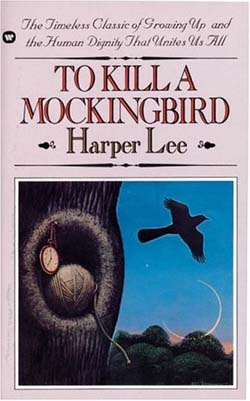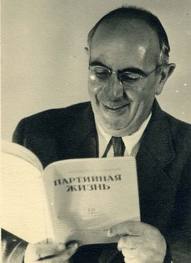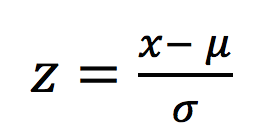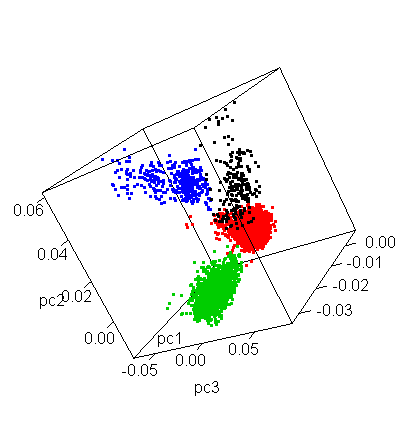# Introduction to Stylometry 📚 <font style="font-size:4rem;width:100%;">💻</font> 🎮 <br /> [Frank Fischer](https://www.hse.ru/en/org/persons/182492735)¹ · [Peer Trilcke](https://www.uni-potsdam.de/lit-19-jhd/peertrilcke.html)² ¹Higher School of Economics, Moscow · DARIAH-EU 🇪🇺<!-- .element: style="font-size:0.8em;" --><br /> ²University of Potsdam · Theodor-Fontane-Archiv <small>(Twitter: **[@umblaetterer](https://twitter.com/umblaetterer)**, **[@peertrilcke](https://twitter.com/peertrilcke)**)</small> <br /> <br /> <!-- .element: style="font-size:0.7em;" -->This presentation: [bit.ly/2PgQbk5](https://bit.ly/2PgQbk5) <!-- .element: style="font-size:0.7em;" -->Big thanks to Daniil Skorinkin for letting us reuse his material! <br /><br /> [Summer School "Debating Data"](https://www.uni-potsdam.de/de/isc/kurse/summerschool/dd.html) · University of Potsdam · 28 August 2018 -- ## TOC <br /> 1. The Philological Detective 2. So, What Is Stylometry? 3. Stylometry, State of the Art 4. Beyond Authorship 5. Stylo Package --- # 1. The Philological Detective -- ## "To Kill a Mockingbird" (1960) <!-- .element width="640px;" --> Auf Deutsch: "Wer die Nachtigall stört". – По-русски: "Убить пересмешника". -- ## In 2015, a dispute broke out ### over this book <!-- .element height="460px;" --> -- ## Starting Point: Two Books <!-- .element height="500px;" --> <!-- .element height="500px;" --> -- ## Stylometry to the Rescue! <!-- .element height="500px;" --> Source: https://www.wsj.com/articles/data-miners-dig-into-go-set-a-watchman-1437096631 -- ## Harper Lee and selected authors of the American South <!-- .element height="500px;" --> <!-- .element: style="font-size:0.75em;" -->Source: Eder/Rybicki: [Go Set A Watchman while we Kill the Mockingbird in Cold Blood, with Cats and Other People](https://web.archive.org/web/20180907193820/http://dh2016.adho.org/abstracts/70) (2016) -- ## Network analysis of the same collection of novels <!-- .element height="500px;" --> <!-- .element: style="font-size:0.75em;" -->Source: Eder/Rybicki: [Go Set A Watchman while we Kill the Mockingbird in Cold Blood, with Cats and Other People](https://web.archive.org/web/20180907193820/http://dh2016.adho.org/abstracts/70) (2016) --- # 2. So, What Is Stylometry? -- ## Stylometry is … <br /> … "the analytic study of literary **styles**, especially as applied to questions of **authorship**" <br /> Source: https://www.dictionary.com/browse/stylometry -- ## "The Main Assumption … <br /> … underlying stylometric studies is that authors have an unconscious as well as a conscious aspect to their style" <br /> Source: [Encyclopaedia of Statistical Sciences](https://onlinelibrary.wiley.com/doi/10.1002/0471667196.ess1174.pub2) -- ## "Stylometric studies … <br /> … in all their variety of material and method, have two features in common: the electronic texts they study have to be coaxed to yield numbers, and the numbers themselves have to be processed via statistics." <br /> Maciej Eder, Jan Rybicki, Mike Kestemont: [‘Stylo’: a package for stylometric analyses](https://docs.google.com/viewer?a=v&pid=sites&srcid=ZGVmYXVsdGRvbWFpbnxjb21wdXRhdGlvbmFsc3R5bGlzdGljc3xneDpmM2U3OGUzZTM2YjkyYzM) (2017) -- ## What to Count <br /> - word frequencies - n-grams of characters - 'ics', 'bere', 'ntise' - headwords - (animal/animals) - parts of speech - syntactic structures - meter (in verse) - … -- ## What else? <br /> - total size of an author's dictionary per text - hapax legomena (see A. Q. Morton: ["Once. A Test of Authorship Based on Words which are not Repeated in the Sample"](https://doi.org/10.1093/llc/1.1.1), 1986) - sentence length - punctuation marks - errors and peculiarities of punctuation (in unedited text) -- ## But why would you do that, <br />"measure" a text like this? <br /> - disputes over authorship - comparison of genres - comparison of male and female voices - comparison of originals and translations - studies of the human "stylome" (idiostyle); early vs. late texts - forensic linguistics, security, anonymity -- It all started, of course, with the question of authorship. <br /> Which cases do you remember? -- <!-- .element height="250px;" --> <!-- .element height="250px;" --> <!-- .element height="250px;" --> <!-- .element height="250px;" --> <!-- .element height="250px;" --> <!-- .element height="250px;" --> -- ## Disputes Over Authorship <br /> "Presumably, each national literature has its own famous unsolved attribution case, such as the Shakespearean canon, a collection of Polish erotic poems of the 16th century ascribed to Mikołaj Sęp Szarzyński, the Russian epic poem *The Tale of Igor’s Campaign*, and many other." <br /> Maciej Eder: [Style-Markers in Authorship Attribution: <br />A Cross-Language Study of the Authorial Fingerprint](https://www.wuj.pl/UserFiles/File/SPL%206/6-SPL-Vol-6.pdf) (2011) -- ## Text Attribution Through Word Count <!-- .element height="300px;" --> - [Lorenzo Valla](https://en.wikipedia.org/wiki/Lorenzo_Valla) (c. 1407–1457), Italian humanist, rhetorician and priest - around 1439/1440 he wrote "Discourse on the Forgery of the Alleged Donation of Constantine" - showed that the "Donation of Constantine" could not have been written in the 4th century – wrong kind of Latin! -- ## First Ventures - 1851: English mathematician Augustus de Morgan suggests the length of words as an indicator of individual style - 1873: New Shakespeare Society promoting the use of quantitative methods to resolve cases of disputed authorship and chronology around the Shakespearean Canon (F. J. Furnivall, F. G. Fleay) - 1887: T. C. Mendenhall, ["The Characteristic Curves of Composition"](https://www.jstor.org/stable/1764604), first known work on the quantification of authorship <!-- .element height="300px;" --> -- ## Dawn of Stylometry <br /> - 1867: L. Campbell, "The Sophisties and Polilicus of Plato" - 1880: W. Dittenberger, "Sprachliche Kriterien für die Chronologie der Platonischen Dialoge" - 1890: W. Lutosławski, "Principes de stylométrie" - 1915: N. A. Morozov: "Linguistic spectra" (inspired by Lutosławski) - 1916: A. A. Markov: "Ob odnom primenenii statističeskogo metoda" – apparently, the first one to realise the importance of function words -- ## Stylometric Progress <br /> - 1937: G. M. Bolling, "The past Tense of 'To Be' in Homer" - 1938: J. B. Carroll: "Diversity of vocabulary and the harmonic series law of word-frequency distribution" -- ## Breakthrough in the '60s ### The Federalist Papers <br /> - a series of landmark articles from the American Revolution - 12 of them controversial (written by Hamilton or Madison?) - Frederick Mosteller, David L. Wallace: "Inference in an Authorship Problem" (1963) - determination of the authorship of the disputed papers, proposition of a standard method for solving authorship problems -- ## Mosteller & Wallace, 1963 <br /> - "The **function words** of the language appear to be a fertile source of discriminators, and luckily the high-frequency words are the strongest." - "it is important to have a **variety of sources of material**, to allow 'between writings' variability to emerge" - "In summary, the following points are clear:" - "Madison is the principal author. These data make it possible to say far more than ever before that the odds are enormously high that Madison wrote the 12 disputed papers." - "While choice of underlying constants (choice of prior distributions) matters, it doesn’t matter very much, once one is in the neighborhood of a distribution suggested by **a fair body of data**." -- ## Pauline Epistles <!-- .element height="450px;" --> A. Q. Morton: The Authorship of the Pauline Epistles: A Scientific Solution (1965) -- ## J. F. Burrows (1/2) <br /> <!-- .element height="500px;" --> -- ## J. F. Burrows (2/2) <br /> "Most readers and critics behave as though common **prepositions**, **conjunctions**, **personal pronouns**, and **articles** – the parts of speech which make up at least a third of fictional works in English – do not really exist. But far from being a largely inert linguistic mass which has a simple but uninteresting function, these words and their frequency of use can tell us a great deal about the characters who speak them." <br /> Preface to "Computation into Criticism", 1987 -- ## Delta Method <br /> - standard measure in stylometry since 2002 - based on the frequency of words (or character strings) - very simple math -- ## Z-Score <br />  (calculated for each word in each text) where - x: frequency of the word in a text - µ: general word frequency in the corpus - σ: standard deviation of the word frequency in the corpus -- ## And for each text we get 100/300/500/1000 <br />of those numbers:  -- ## Now, the "proximity" of authors can simply be <br />measured by measuring a line, like this: <br />  -- ## Only in 100/300/1000-dimensional space <br />  -- ## Admittedly, that sounds … a little far-fetched. <br /> ## Yes. But it works.<!-- .element: class="fragment" --> -- <!-- .element height="580px;" --> --- # 3. Stylometry, State of the Art -- ## Stylometry Beyond Authorship Attribution: <br /> - genres - influence of editors - putting a date on writings - evolution of an author's style - gender, age - influence of translators -- ## J. K. Rowling or Robert Galbraith? <br /> <!-- .element height="500px;" --> -- ## Shakespeare or Marlowe? <br /> <!-- .element height="350px;" --> <br /> "Henry VI": sequential analysis. -- <!-- .element height="520px;" --> Source: [The Guardian](https://www.theguardian.com/culture/2016/oct/23/christopher-marlowe-credited-as-one-of-shakespeares-co-writers) (2016) -- ## Elena Ferrante <!-- .element height="520px;" --> --- # 4. Beyond Authorship -- "But the study of literature and authorship is not only who wrote what, and who didn’t: it can be also about similarities and differences between texts by different authors." <br /> <!-- .element: style="font-size:0.8em;" -->Eder/Rybicki: [Go Set A Watchman while we Kill the Mockingbird in Cold Blood, with Cats and Other People](https://sites.google.com/site/computationalstylistics/projects/lee_vs_capote) (2016) -- ## Genres: Shakespeare <br /> <!-- .element height="500px;" --> -- ## Date: Dickens <!-- .element height="500px;" --> "the ripening aubergine" 😊 (Jan Rybicki) -- ## Date: Tolstoy <br /> <!-- .element height="500px;" --> -- ## Date: 1000 Novels <br /> <!-- .element height="500px;" --> -- ## Virginia Woolf: "Night and Day" (Polish translation) <br /> - change of translator: Anna Kołyszko → Magda Heydel <br /> <!-- .element height="300px;" --> <br /> Source: Maciej Eder, Jan Rybicki. -- ## Outside of Literature (1/2) <br /> <!-- .element height="460px;" --> -- ## Outside of Literature (2/2) <br /> - "Unabomber" Ted Kaczynski perpetrated a number of bomb attacks on universities and airlines between 1978 and 1995 - promised to stop if his 35,000-word anti-industrialist "manifesto" was published in major newspapers - distinctive writing style and turns of phrase enabled him to be identified -- ### Adversarial stylometry <iframe width="853" height="480" src="https://www.youtube-nocookie.com/embed/-b0Ta9h62_E?vq=hd720&rel=0&controls=1&showinfo=1" frameborder="0" allowfullscreen></iframe> Michael Brennan and Rachel Greenstadt: Deceiving Authorship Detection (2011) --- # 5. Stylo Package -- ## Stylo <br /> - package for stylometry written for R - built-in Delta function - many other metrics - graphical interface! -- ## Stylo <br /> - about the program: [developers' website](http://sites.google.com/site/computationalstylistics/stylo) - [how-to document](https://docs.google.com/viewer?a=v&pid=sites&srcid=ZGVmYXVsdGRvbWFpbnxjb21wdXRhdGlvbmFsc3R5bGlzdGljc3xneDpmM2U3OGUzZTM2YjkyYzM) from the developers - M. Eder, M. Kestemont, J. Rybicki: [Stylometry with R: A Package for Computational Text Analysis](https://journal.r-project.org/archive/2016-1/eder-rybicki-kestemont.pdf) (2016) -- ## Stylo: Main Functions <br /> - stylo() - classify() - rolling.delta(), rolling.classify() - oppose() -- ## stylo() <br /> - calculation and visualisation of stylistic proximity - different ways of clustering (grouping) texts by proximity - display of multidimensional "stylistic space" of texts on a 2D plane (PCA, MDS, t-SNE) - lists of most frequently used words, frequency tables, etc. -- ## classify() <br /> - text classification with stylometry features - main tool for actual authorship attribution - employs standard machine-learning algorithms - requires two sets of documents - training (primary_set) - test (secondary_set) -- ## rolling.delta() <br /> - dynamic changes in a text - text window of adjustable size -- ## oppose() <br /> - contrastive analysis - words significantly preferred/avoided - comparative studies (e.g., male vs. female voices) --- ## Preparations <br /><br /> Install R, RStudio, Gephi. <br /><br /> Hands-on!